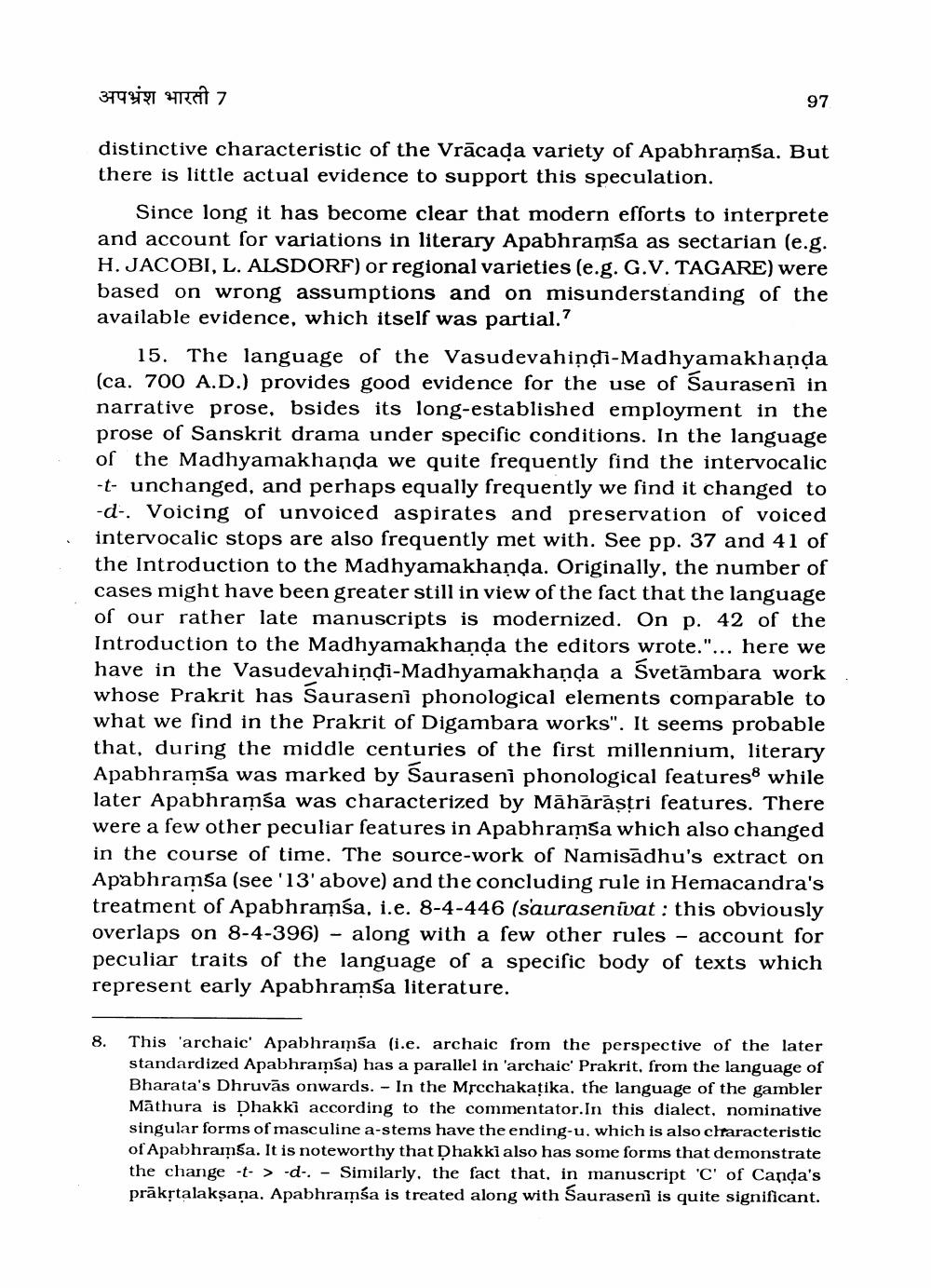________________
अपभ्रंश भारती 7
97
distinctive characteristic of the Vrācaļa variety of Apabhramba. But there is little actual evidence to support this speculation.
Since long it has become clear that modern efforts to interprete and account for variations in literary Apabhramsa as sectarian (e.g. H. JACOBI, L. ALSDORF) or regional varieties (e.g. G.V. TAGARE) were based on wrong assumptions and on misunderstanding of the available evidence, which itself was partial.?
15. The language of the Vasudevahindi-Madhyamakhanda (ca. 700 A.D.) provides good evidence for the use of Sauraseni in narrative prose, bsides its long-established employment in the prose of Sanskrit drama under specific conditions. In the language of the Madhyamakhanda we quite frequently find the intervocalic -t- unchanged, and perhaps equally frequently we find it changed to -d-. Voicing of unvoiced aspirates and preservation of voiced intervocalic stops are also frequently met with. See pp. 37 and 41 of the Introduction to the Madhyamakhanda. Originally, the number of cases might have been greater still in view of the fact that the language of our rather late manuscripts is modernized. On p. 42 of the Introduction to the Madhyamakhanda the editors wrote."... here we have in the Vasudevahindi-Madhyamakhanda a Svetambara work whose Prakrit has Sauraseni phonological elements comparable to what we find in the Prakrit of Digambara works". It seems probable that, during the middle centuries of the first millennium, literary Apabhramba was marked by Sauraseni phonological features while later Apabhramsa was characterized by Māhārāstri features. There were a few other peculiar features in Apabhramsa which also changed in the course of time. The source-work of Namisādhu's extract on Apabhramsa (see '13' above) and the concluding rule in Hemacandra's treatment of Apabhramsa, i.e. 8-4-446 (sauraseniat: this obviously overlaps on 8-4-396) - along with a few other rules - account for peculiar traits of the language of a specific body of texts which represent early Apabhramsa literature.
8.
This archaic Apabhramsa (i.e. archaic from the perspective of the later standardized Apabhramsa) has a parallel in 'archaic' Prakrit, from the language of Bharata's Dhruvās onwards. - In the Macchakaţika, the language of the gambler Māthura is Dhakki according to the commentator. In this dialect, nominative singular forms of masculine a-stems have the ending-u, which is also characteristic of Apabhramsa. It is noteworthy that Dhakki also has some forms that demonstrate the change t > d. - Similarly, the fact that, in manuscript 'C' of Canda's prākstalaksaņa, Apabhramśa is treated along with Sauraseni is quite significant.




